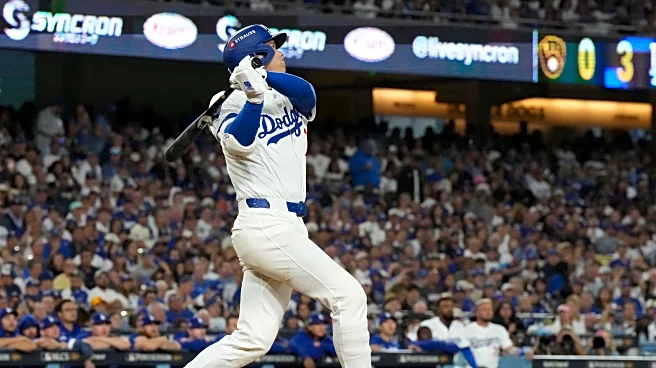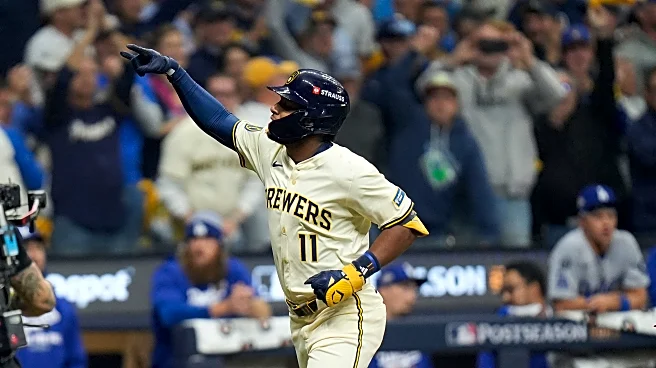What's Happening?
The Los Angeles Dodgers have solidified their position as a dominant force in Major League Baseball by strategically investing in top-tier talent. The team has spent a record $400 million, which rises to $550 million when including taxes, to secure a roster
that includes four potential Hall of Famers. A key highlight of their strategy is the acquisition of Shohei Ohtani, who signed a $700 million, 10-year contract with deferred payments, effectively reducing its real value to approximately $450 million. This deal allows the Dodgers to pay Ohtani at a rate comparable to a utility player until the deferrals are due in a decade. The Dodgers' investment in Ohtani is already yielding significant returns through sponsorships, marketing, and ticket sales, while Ohtani benefits from additional earnings in Los Angeles. The Dodgers' approach reflects a long-term plan to maintain competitive advantage and capitalize on Ohtani's marketability.
Why It's Important?
The Dodgers' financial strategy underscores a broader trend in professional sports where teams leverage high-profile player acquisitions to enhance both on-field performance and off-field revenue streams. By securing Ohtani, the Dodgers not only strengthen their lineup but also boost their brand value and market presence. This approach highlights the increasing importance of strategic financial planning in sports management, where the potential for long-term gains can outweigh immediate costs. The Dodgers' success could influence other teams to adopt similar strategies, potentially reshaping the financial landscape of Major League Baseball. The team's ability to attract and retain top talent also reinforces Los Angeles as a premier destination for elite athletes, further enhancing the city's reputation in the sports world.
What's Next?
As the Dodgers continue to benefit from their strategic investments, other MLB teams may reevaluate their own financial strategies to remain competitive. The success of the Dodgers' approach could lead to increased competition for high-profile players, driving up contract values and altering the dynamics of player negotiations. Additionally, the team's financial model may prompt discussions within the league about salary caps and revenue sharing to ensure competitive balance. The Dodgers' ongoing performance will be closely watched as a benchmark for the effectiveness of high-investment strategies in professional sports.














